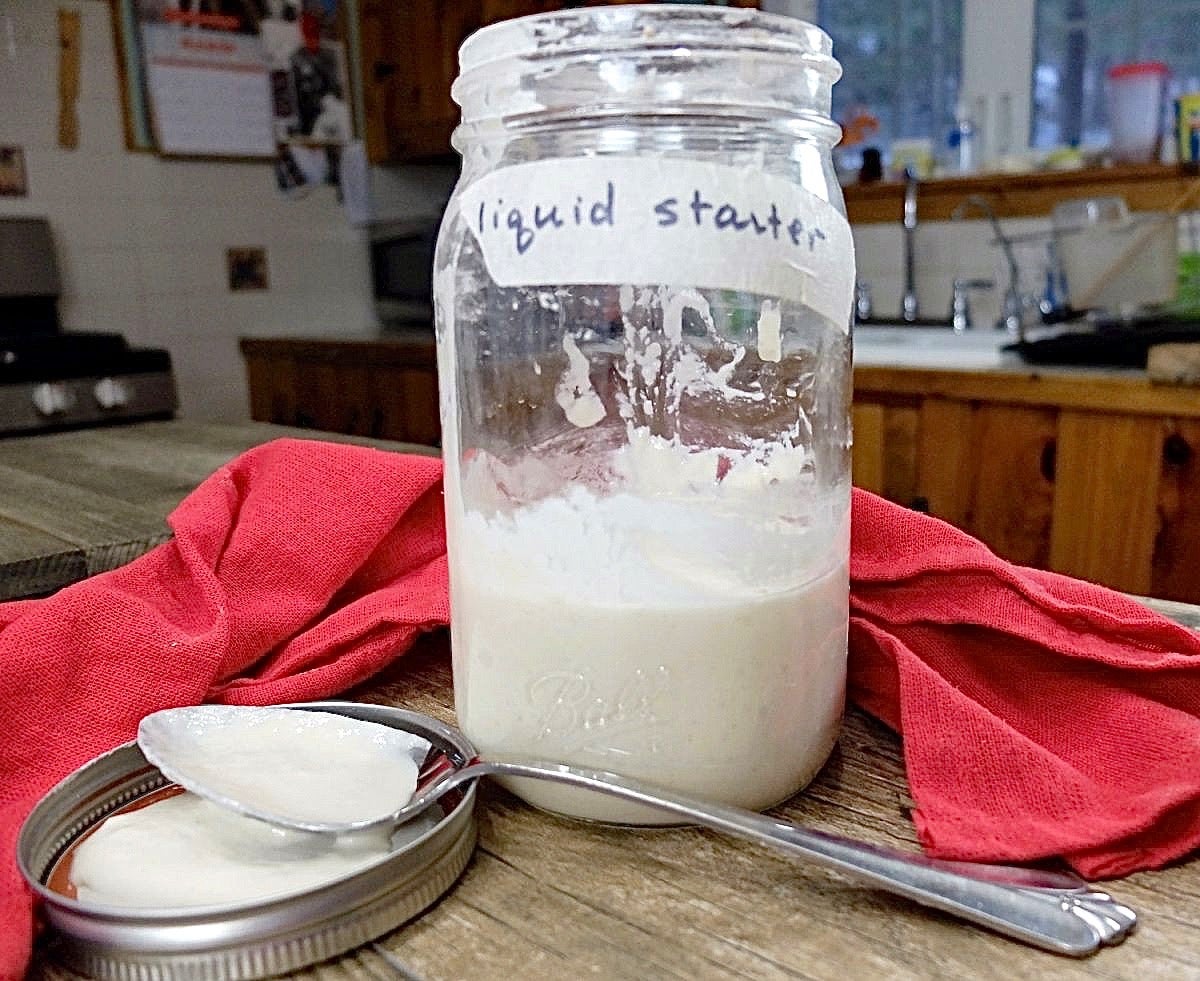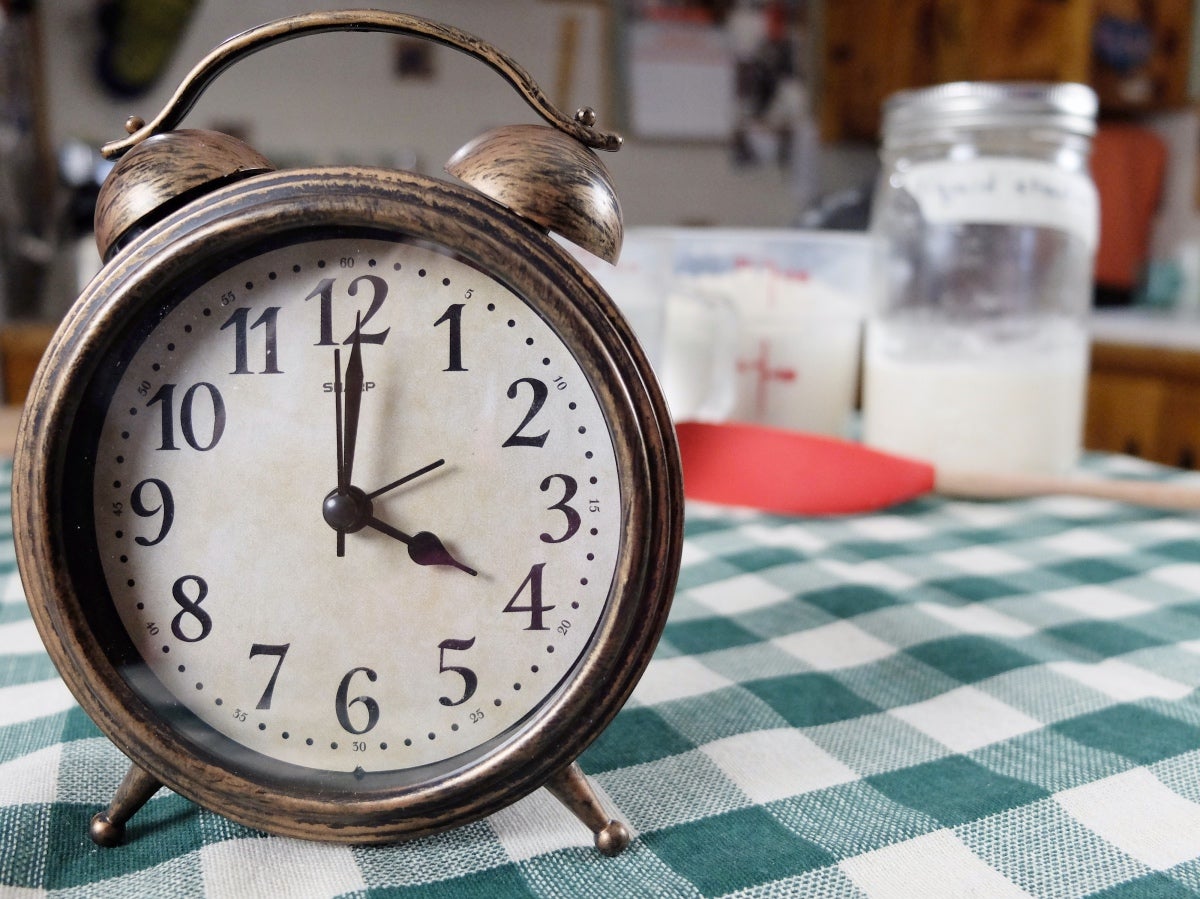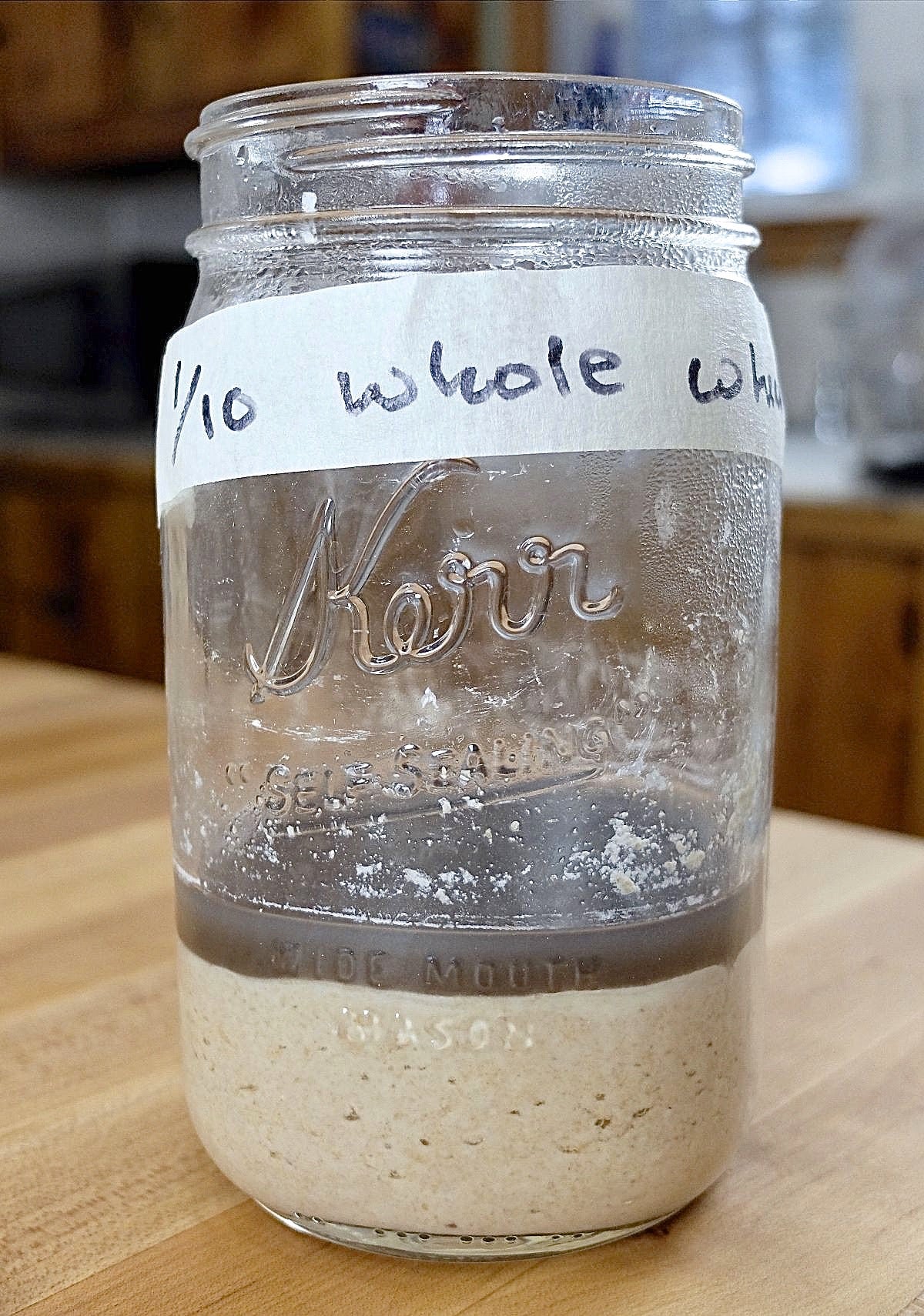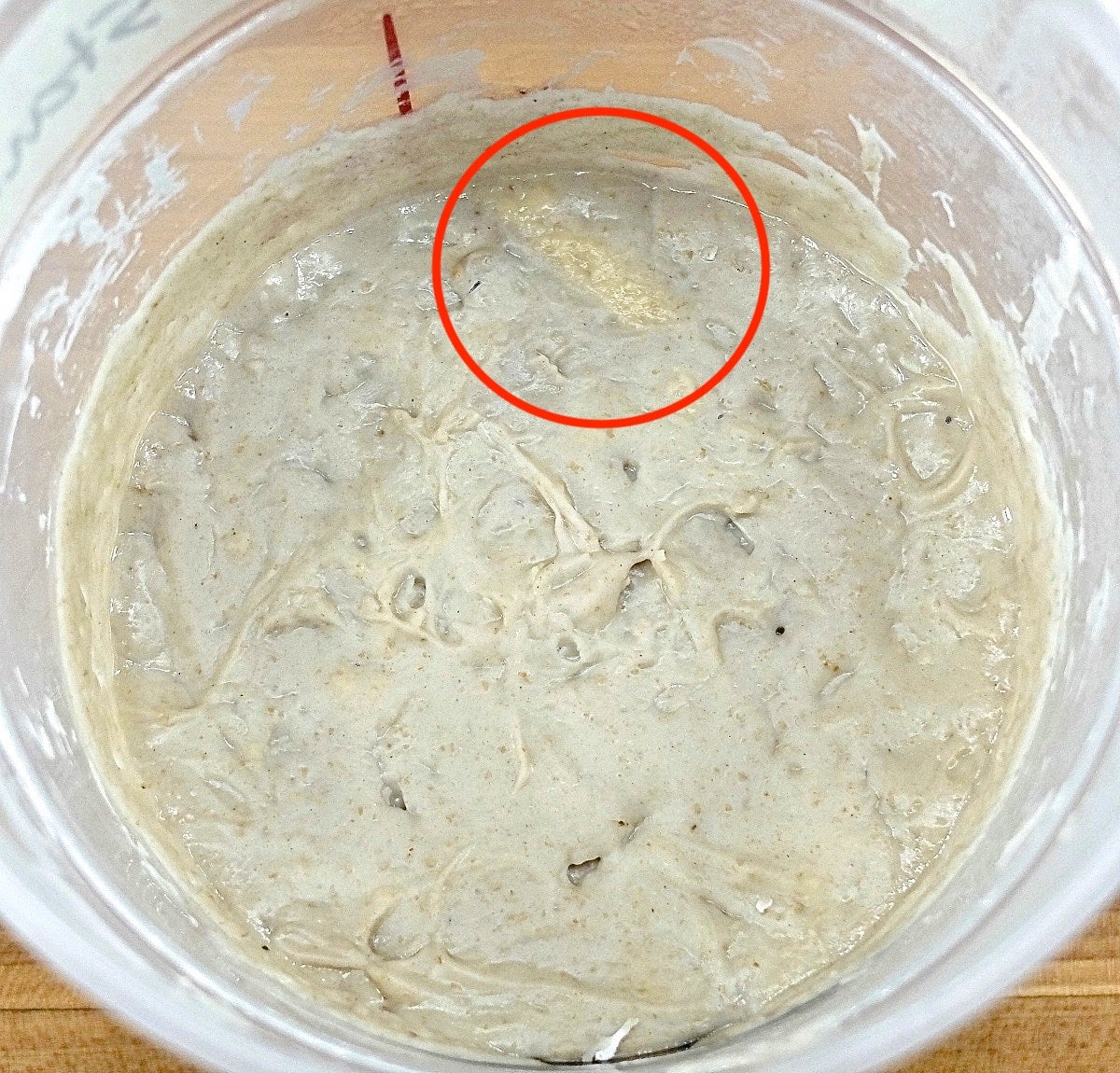


“Did I kill my starter?” This is a surprisingly common sourdough question on our Baker’s Hotline. Novice and experienced bakers alike worry about the viability of their starters and call us for sourdough starter troubleshooting advice.
For many sourdough bakers, the underlying biochemistry at work in their starter remains a bit of a mystery. Thankfully, it's quite possible to bake great sourdough bread while still being a little fuzzy when it comes to what’s actually happening in that little jar of starter.
The 6 to 10 days it takes to create a healthy and mature sourdough starter from scratch requires slightly more attention to "death threats," because a fledgling starter hasn't yet developed the defenses that characterize a mature starter. But once your starter is fully developed, it's really pretty darn hard to kill.
And if you've purchased a sourdough starter from us, rest assured that it's a mature specimen that will stand up well against unwanted bacteria or mold.

METAL: Stirring your starter with a metal spoon or placing it in a metal bowl won't kill your starter. While we don't recommend making or keeping your starter in contact with reactive metals like copper or aluminum, stainless steel is harmless.

MILD NEGLECT: Missing a feeding or not timing the feedings exactly 12 hours apart won't even come close to killing your starter. Please don't ever set your alarm to get up in the middle of the night to feed your starter!
INCORRECT FEEDINGS: Feeding your starter the wrong amount of flour or water won't kill it. While your starter may seem too dry or too wet, and may not rise the way you expect, no permanent damage has been done. You can correct its consistency by adding a little more flour or water, and then being more careful the next time you feed it.
BRIEFLY FREEZING YOUR STARTER: While there's some dispute among sourdough enthusiasts about the benefits and/or dangers of freezing sourdough starter, a brief period in the freezer isn't likely to kill a fully developed starter.
I recently froze a portion of my well-maintained starter a few hours after it was fed. Three days later I thawed it out at room temperature and let it continue to ferment. It was definitely sluggish at first, but after a second feeding it rose well and had a good aroma.
That being said, too much time in the freezer will definitely damage some of the wild yeast in your starter, and is also likely to kill off some of the friendly bacteria that contribute flavor. If you need to put your starter on hold for an extended time, we recommend drying your starter.
HEAT: If you allow your sourdough starter to ferment in the oven with the light on to keep it warm, and then forget it's in there and turn on the oven, it's unlikely your starter will make it out alive. Yeast dies at 140°F, and it's likely that your sourdough starter will suffer at temperatures even lower than that. It’s best to maintain your starter at comfortable room temperature (around 70°F), though a little higher or lower won't hurt anything.
SEVERE NEGLECT: If you neglect your starter long enough, it will develop mold or signs of being overtaken by bad bacteria. Mold can appear in various colors and is typically fuzzy in appearance. Bad bacteria is generally indicated by an orange or pink tinge or streak. Once your starter has lost its natural ability to ward off intruders, it's time to start over.

"Hooch" is the liquid that collects on the top of your starter when it hasn't been fed in awhile. This liquid is the alcohol given off as wild yeast ferments. The presence of hooch isn't a sign that your starter is in danger. However, it does indicate that your starter is hungry and needs to be fed.
When your starter is neglected for an extended period, the hooch tends to turn from clear to dark-colored. We get lots of calls from sourdough bakers worried about the safety or danger of various hooch hues. Is gray bad? What about brown or black? Surprisingly, none of these colors indicate that your starter has spoiled.

However, if you see a pink or orange tint or streak, this is a sure sign that your sourdough starter has gone bad and should be discarded. The stiff starter above was left out at room temperature for two weeks. It's definitely time to throw it out and start over.
I hope you'll share your own sourdough starter questions and discoveries below. There's always more to learn when it comes to sourdough!
For more information, please check out part 2 of this sourdough starter troubleshooting post!


July 12, 2023 at 12:06am
My starter is, as usual, very lively; I build a levain at night and mix a sandwich loaf dough, with both commercial yeast and natural starter, in the am, and until maybe a month ago my bread rose so high that I could hardly fit it in the designated plastic bags that I use for a soup kitchen that I bake for. All of a sudden something has changed; the dough behaves as I expect through the bulk rise, then I shape the loaves and put them in the pans and here is where the trouble starts. It seems to loses strength, and within a couple of hours it stops rising, and by the time I bake it it has begun to deflate. I experimented and eliminated the commercial yeast and have determined the problem is my starter. Why does it lose strength? WHAT IS GOING ON??
July 14, 2023 at 11:55am
In reply to My starter is, as usual,… by Amy Manny (not verified)
Hi Amy, unless you have changed the type of flour you normally use to a flour with a lower protein percentage, I suspect your results are likely to be temperature related. If your home is warmer this time of year, the dough may be rising and fermenting faster (which sounds like a good thing), but this could be contributing to the structure of your dough breaking down earlier than you expect it to, which is what happens when dough over-ferments. Check out this article on Desired Dough Temperature for some tips on regulating the temperature of your dough, which should help you achieve more consistent results. If the dough is rising well during the bulk ferment, I doubt the issue is related to your sourdough starter.
June 12, 2023 at 4:47pm
I want to add chives to your sourdough bread recipe. At what stage of the recipe should I do this?
Thanks
Newbie here
June 12, 2023 at 4:54pm
In reply to I want to add chives to your… by Melissa (not verified)
Hi Melissa, you could add chopped chives towards the end of the kneading process and they should incorporate fine that way. Happy baking!
June 6, 2023 at 8:30pm
Hi Barb,
I noticed that you have a seal on the lid of your starter. I bought a jar with a sealed glass lid, but have just read that you shouldn't keep the starter in an airtight container. Any suggestions?
June 8, 2023 at 5:19pm
In reply to Hi Barb, I noticed that you… by Lynne (not verified)
The advice to not keep it in an airtight container is more about the pressure that can build up from the accumulating C02 in your jar, Lynne. Just like kombucha and other fermented cultures you would need to remember to open the jar once a day if you lock it down tight with a sealed lid. One trick we often suggest if you are not going to be using it quite as often as Barb does, is to lock the lid but remove the plastic gasket. The small amount of wiggle room created is usually enough to relieve the pressure.
May 25, 2023 at 10:13pm
My starter has stopped rising for the past couple of days. It won’t rise at all, just some holes filled with the hooch. Is my starter dead? What can I do to get it to rise again?
May 26, 2023 at 12:21pm
In reply to My starter has stopped… by Henry (not verified)
Hi Henry, are you in the process of creating a starter from scratch, or is this a fully mature starter that you are attempting to revive? If you're working on creating a starter from scratch, it's quite common for the starter to go through a lull in rising, particularly if you happened to see an early rise on Day 1 or 2. This early rise was most likely caused by a bacterium that gives off carbon dioxide, rather than the wild yeast. Unfortunately, the presence of this type of bacteria seems to be associated with a subsequent delay in the yeast kicking in. The good news is that patience almost always wins out when it comes to sourdough starters. However, occasionally this delay can go on for quite a while, so there are a few alternatives you might want to consider. First, you can reduce the size of your starter, so that you're not using up quite so much flour while you're waiting for it to start rising. Once your starter is rising consistently, it's easy to build the quantity of starter back to the normal maintenance amount we recommend in our sourdough starter recipe.
If you'd like to take a more proactive approach, you could try this alternative feeding routine which was suggested to us by microbiologist and baker, Debra Wink, who has found that increasing the acidity of the starter seems to help pave the way for the wild yeast. This method looks like this:
1. Feed only once a day.
2. Feed with whole wheat flour rather than unbleached all-purpose.
3. Feed with a ratio of 2:1:1 (starter:water:flour, by weight). For example, for our regular starter recipe your once a day feeding would look like this: 1/2 cup (113g) starter + 1/4 cup (57g) water + 1/2 cup (57g) whole wheat flour. A smaller starter feeding would look like this: 30g starter + 15g water + 15g whole wheat flour.
Once the starter begins rising (doesn't have to double) two days in a row, then it's important to resume twice a day feedings (which will help keep the yeast more active and vigorous. At this point you can also return to the 1:1:1 (starter:water:flour, by weight) routine, and gradually transition back to using all-purpose flour over the course of 3-4 feedings.
Once your starter is doubling consistently and has a pleasant aroma, then you can consider your starter mature and ready to bake bread!
May 31, 2023 at 1:03pm
In reply to Hi Henry, are you in the… by balpern
Hi Barb! It definitely sounds like my starter is experiencing what u described here. I had a great/early rise on day 2 ( at the time I was so stoked), but activity has been decreasing ever since. I’m on day 10 now, not much growth if at all, but I do see bubbles on the surface and in the jar so I know I haven’t completely killed it. I am in a cooler environment being by the beach and have tried to make warmer spots for my starter, but am still struggling. How long should I give Debra Wink’s proactive approach before I completely give up and start all over? Thanks!
June 3, 2023 at 10:20am
In reply to Hi Barb! It definitely… by Grace (not verified)
Hi Grace, I wouldn't give up on your starter! If it's bubbling that's a good sign, so keep going and give the smaller starter version of the DW method a try. I expect you'll see some rising soon!
Pagination